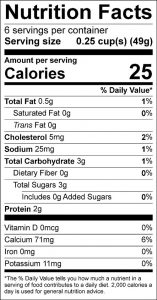Bulletin #4174, Vegetables and Fruits for Health: Vegetable Snacks

Revised and updated by Assistant Extension Professor Nadine Reimer, University of Maine Cooperative Extension.
Originally developed by Extension Nutrition Specialist Nellie Hedstrom, University of Maine Cooperative Extension.
For information about UMaine Extension programs and resources, visit extension.umaine.edu.
Find more of our publications and books at extension.umaine.edu/publications/.
Colorful, crunchy vegetables make excellent low-calorie, low-fat snacks. Cut the following raw vegetables into bite-size portions. Serve plain or with low-fat dip (see our recipes below) or cottage cheese.
- broccoli
- butternut squash
- carrots
- cauliflower
- celery
- cucumbers
- cherry tomatoes (cut in quarters for toddlers)
- green or yellow string beans
- mushrooms
- radishes
- scallions
- summer squash
- sweet red and green bell peppers
- turnips (peeled)
- zucchini
To avoid the danger of choking, steam or microwave any hard vegetables you plan to feed to toddlers, and then cut them into small pieces. (Pieces should be smaller than a grape.) When serving vegetables to anyone who has trouble chewing, it is a good idea to steam or microwave them first until tender. Vegetables that are best prepared this way include broccoli, carrots, cauliflower, turnips, and winter squash.
Creative Ideas for Using Vegetables
Celery Stuffers
Ants on a Log: celery stuffed with peanut butter and topped with raisins.
Hawaiian Delight: celery stuffed with part-skim ricotta cheese which has been mixed with unsweetened crushed pineapple.
Vegetable Kabobs
Skewer cut-up pieces of fresh vegetables on a long toothpick. Good choices include whole mushrooms, carrot slices, cucumber rings, green pepper slices, and cherry tomatoes. (Plastic straws or plastic coffee stirrers might make good skewers for children.)
Veggie Pocket
Stuff cold, leftover vegetables in a pita pocket and add a small amount of low-fat salad dressing.
Toasted Pumpkin Seeds
Place cleaned seeds on a shallow pan. Toast at 350°F for 20 minutes. Cool and enjoy immediately or store in a closed container.
Hummus (Chickpea Dip)
A great no-cholesterol dip.
Serves 12 (1/4-cup servings)
20 ounces cooked or canned chickpeas, drained
1 tablespoon peanut butter OR 1/3 cup tahini (sesame butter)
1/4 cup lemon juice
1/4 cup water
2–3 cloves garlic
1/2 teaspoon cumin (optional)
1–2 tablespoons oil
Place first 6 ingredients in a blender. Blend until mixture is a smooth paste. While mixture is blending, slowly add oil. Chill. Pour into bowl. Serve with vegetables.
Dilled Low-Fat Yogurt Dressing or Dip
A creamy, low-fat, low-calorie dressing.
Serves 6 (1/4-cup servings)
1 cup low-fat yogurt
2 tablespoons vinegar
1/2 small onion, finely chopped
1/2 teaspoon dill seeds or dill weed
1/4 teaspoon dry mustard
1/4 teaspoon minced garlic
Mix all ingredients together in a small bowl. Refrigerate for 2 or more hours to let flavors blend. Serve as a dressing on a salad, or serve as a dip with raw vegetables such as cauliflower and broccoli flowerets, celery and carrot sticks, whole snap peas, cucumber and tomato wedges, sliced summer squash, and sweet pepper slices.
Originally adapted with permission from materials developed by the University of Massachusetts Cooperative Extension Nutrition, Diet and Health Committee.
Information in this publication is provided purely for educational purposes. No responsibility is assumed for any problems associated with the use of products or services mentioned. No endorsement of products or companies is intended, nor is criticism of unnamed products or companies implied.
© 2009
Call 800.287.0274 (in Maine), or 207.581.3188, for information on publications and program offerings from University of Maine Cooperative Extension, or visit extension.umaine.edu.
In complying with the letter and spirit of applicable laws and pursuing its own goals of diversity, the University of Maine System does not discriminate on the grounds of race, color, religion, sex, sexual orientation, transgender status, gender, gender identity or expression, ethnicity, national origin, citizenship status, familial status, ancestry, age, disability physical or mental, genetic information, or veterans or military status in employment, education, and all other programs and activities. The University provides reasonable accommodations to qualified individuals with disabilities upon request. The following person has been designated to handle inquiries regarding non-discrimination policies: Director of Equal Opportunity, 5713 Chadbourne Hall, Room 412, University of Maine, Orono, ME 04469-5713, 207.581.1226, TTY 711 (Maine Relay System).



